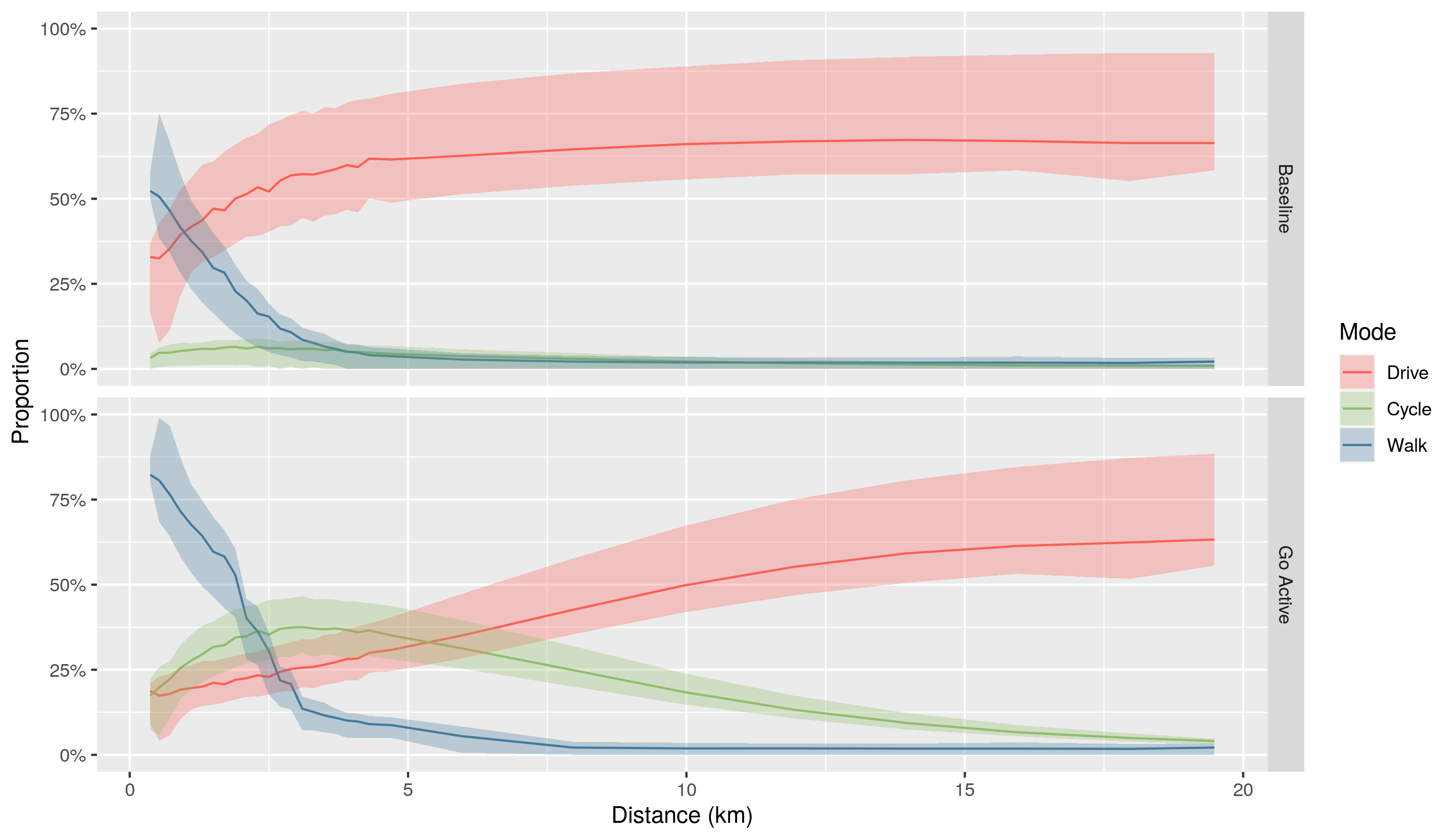ActDev Project
Actionable Evidence Supporting Active Travel (and Decarbonisation) in the Planning System
Robin Lovelace, Joey Talbot
Leeds’ Institute for Transport Studies and partners
ActDev Workshop, 2021-12-07 (updated: 2021-12-07) Reproducible source code: github.com/cyipt/actdev
This housing estate in Bicester illustrates the problem: it's called the Bicester Eco-Town so you'd be forgiven for thinking that it has a low environmental impact
A picture can tell a thousand words but it still can be deceptive: we need a more objective view of things
When planning officers are presented with a proposal it is often difficult to evaluate sustainability claims
Guidance and objective measures are scarce, meaning that intuition is often used
What we need is an object evidence base
Data driven evidence (source: https://actdev.cyipt.bike/bicester/)
Why are housing developments being approved in places like this at a time of climate crises?
Demand for housing

Source: Tackling the under-supply of housing in England, House of Commons Research Briefing Jan 2021
Policy and research context


Policy and research context


- Tensions between vital policy objectives of housing/levelling up vs decarbonisation/active travel
Policy and research context


Tensions between vital policy objectives of housing/levelling up vs decarbonisation/active travel
Transport models were designed to support growth in car ownership and reduce journey times (Boyce and Williams, 2015)
Policy and research context


Tensions between vital policy objectives of housing/levelling up vs decarbonisation/active travel
Transport models were designed to support growth in car ownership and reduce journey times (Boyce and Williams, 2015)
Few tools for assessing active travel potential or provision in/around new developments (Megan Streb MSc)
Policy and research context


Tensions between vital policy objectives of housing/levelling up vs decarbonisation/active travel
Transport models were designed to support growth in car ownership and reduce journey times (Boyce and Williams, 2015)
Few tools for assessing active travel potential or provision in/around new developments (Megan Streb MSc)
Governments must meet multiple competing objectives
The August 2020 planning white paper outlined the need to create beautiful places and provide housing
A House of Commons Research Briefing from January 2021 outlined the challenge of increasing housing supply to meet the aim of building 300k houses per year
The July 2021 Decarbonising transport paper set out dramatic policies for the sector with rapid uptake of walking and cycling: "We will aim to have half of all journeys in towns and cities cycled or walked"
And in the 2021 Gear Change one year on policy paper, the prime minister said in the foreword
"I support councils, of all parties, which are trying to promote cycling and bus use. And if you are going to oppose these schemes, you must tell us what your alternative is, because trying to squeeze more cars and delivery vans on the same roads and hoping for the best is not going to work."
As we've seen the problem is largely political but it has has a substantial technical component
The 'tools of the trade'
- Climate science, air pollution and health force a shift in focus
- The concepts of 'participatory democracy' and 'citizen science' mean there is a need for collaborative solutions
Despite substantial academic work on integrated land-use transport models and an entire academic journal dedicated to it
Planning and transport not always joined up
The ActDev tool
4 month UKRI funded project on high impact research in transport/planning
Publicly available tool with maps and data on active travel levels, potential and provision

Levels of analysis

The ActDev Team: agile, reproducible, open data science and software development

The ActDev Team: agile, reproducible, open data science and software development



Feedback from workshop
This is absolutely glorious and I and many others were simply astounded when we saw it at that workshop on Friday.
— Kit Allwinter (@KitAllwinter) March 19, 2021
Go and have a look if you're involved in urban design and place - you won't regret it. https://t.co/1hlxMM5MO1
Stakeholder mapping
Professional planners: Lynda Addison, Lead on planning and transport integration, Transport Planning Society
Active travel planners: Julian Sanchez, Active Travel, Programme Manager, Essex County Council, Kit Allwinter, Active Travel Officer West Yorkshire Combined Authority
Consultants, e.g. Lucy Taussig, Consultant, Active Travel
Local Authority Planning Officers
NGOs, e.g. Megan Streb, Partnership Manager, Sustrans
The wider public
Research findings
- Median distance to town centre is 3.2 km only three within 2.0 km
- 14% of trips made by active travel in the areas surrounding the 35 sample site locations
- Provision of good infrastructure varies considerably
Source: Academic paper under review (Talbot et al. 2022)

The importance of open data and open tools

- Transport models have a huge impact on transport planning
- More people with access to good data -> better outcomes
- New paper, Lovelace et al (2020) describes the emergence and possibilities for 'open access models'
Possible next steps
Review of stakeholder needs, engagement with relative parties, e.g. DfT, DLUHC, BEIS, CCC, the nascent Active Travel England, local authority planning officers, and more
Additional data sources
Improve modelling to include more explanatory variables
Refine treatment of walking
Additional trip purposes
Scale up nationally
Training, outreach, maintenance

Extra data sources
N. car parking spaces
Our open source and agile development process allows anyone to suggest additions
We have already added three more sites following popular demand, there is demand for more
Planning applications nationwide
Location of 100k+ 'large development sites'
Analysis is work in progress

Modelling change: scenarios

Site level data

Contextual layers

The A/B Street tool

Live demo of the tool

References
Boyce, D.E., Williams, H.C.W.L., 2015. Forecasting Urban Travel: Past, Present and Future. Edward Elgar Publishing.
Beimborn, E., Kennedy, R., 1996. Inside the Blackbox: Making Transportation Models Work for Livable Communities. Citizens for a Better Environment.
Lovelace, R., Parkin, J., Cohen, T., 2020. Open access transport models: A leverage point in sustainable transport planning. Transport Policy 97, 47–54. https://doi.org/10.1016/j.tranpol.2020.06.015
The ActDev Questionnaire
 Your feedback will help improve our work
Your feedback will help improve our work


